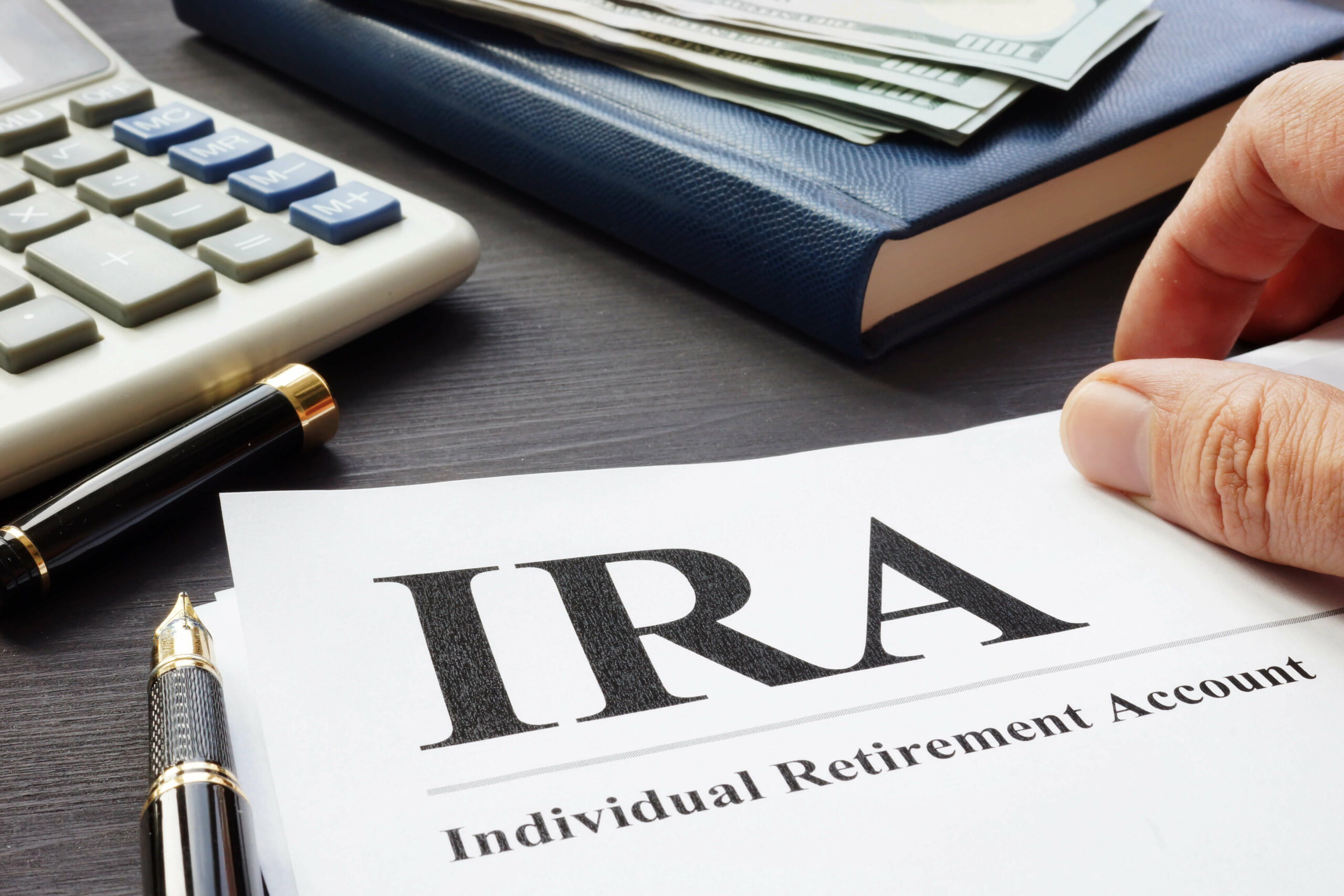The reason many people end up getting stressed during their retirement years is that they don’t have enough money to cover their needs and expenses. That’s why a crucial part of retirement planning is determining your retirement income goals, including decisions and actions necessary to attain those goals, such as using a pension calculator or organizing your retirement account efficiently.
What is a retirement account? An individual retirement account or IRA refers to an account you can use to invest and save for retirement. But how do you ensure having enough money when you retire, so you can pursue your passion and sustain your basic needs?
In this article, you’ll learn how to organize your IRA efficiently for a more meaningful and enjoyable retirement.
- List All Your Retirement Accounts
The first step in organizing your retirement account is listing everything that’s included, such as your personal retirement accounts and employer-provided plan. An individual retirement account (IRA) is a type of personal retirement account. Some employer-provided plans include the following:
- 401(k)Plan: Many employers offer a defined contribution, tax-advantaged retirement account to their employees, called 401(k) plan. This plan is named after the U.S. Internal Revenue Code section. Employees make contributions by automatic payroll withholding, or the employer withholds the amount from the employee’s salary and transfer to a 401(k) account. This retirement account is tax-advantaged because the plan is not taxed until you withdraw the money after retirement. For a Roth 401(k) plan, you may enjoy tax-free withdrawals.
- 403(b) Plan: This retirement plan is also known as a tax-sheltered annuity plan for certain employees, such as those of public schools, certain ministers, and employees of certain tax-exempt organizations.
- Deferred Compensation Plan: This retirement plan withholds a portion of your salary until a specified date. The lump sum is paid out on the specified date, such as pensions, employee stock options, and retirement plans.
- Simplified Employee Pension: The SEP-IRA refers to a retirement savings plan offered by employers, which may also apply to self-employed individuals. Employers, on behalf of qualified employees, make tax-deductible contributions to their SEP IRAs. With SEP IRAs, they have higher contribution limits, which can be assigned immediately with lower administration costs.
- SIMPLE IRA Plan: SIMPLE stands for Savings Incentive Match Plan for Employees. This retirement plan allows employers and employees to contribute towards the traditional IRAs originally set up for employees, highly suitable as a retirement savings plan small employers can offer. SIMPLE IRA doesn’t have any operating or start-up cost like a traditional retirement plan.
- Diversify Your Portfolio
For many years, retirement planning focuses on stock-and-bond portfolio because it’s less volatile and offers more income to aging retirees. However, this traditional portfolio may not work for many retirees due to low bond yields, generating little income. Even if you purchase bonds at low rates, they’ll lose value as interest rates increase in the future. Therefore, it’s not practical to rely on them as the core of your major retirement portfolio.
It’s not advisable to invest your money in one basket. You need to diversify your portfolio to ensure you have a backup if one fails. So, how do you diversify your investment portfolio?
Here are some ways to diversify your retirement portfolio:
- Invest In Precious Metals: Diversifying a retirement account can help protect it from market instability. For instance, you can diversify your portfolio by investing in precious metals such as gold, silver, and palladium to attain long-term financial stability. Precious metals can bolster your wealth because they tend to increase value with time. You can allocate precious metals to your retirement fund with the help of an IRS-approved custodian. A custodian can be a bank or a company that acts as the middle man to handle precious metal storage and record-keeping.
- Real Estate: Real estate can benefit your retirement account because it offers tax advantages and passive income. Buying apartments or houses and renting them out on a short-term or long-term basis provides you a good income flow. It’s also a good idea to invest in real estate investment trusts or REITs to grow your retirement account without necessarily managing a property or becoming a landlord. It’s a good idea to invest in non-publicly traded REITs with lower stock market correlation to reduce rapid price changes or volatility and increase consistent returns.
- Fixed Indexed Annuities: These are issued by insurance companies, which are a contract between insurance companies and investors. Fixed indexed annuities (FIA) are a great alternative to bonds and bond funds because they provide tax-deferred growth, a regular income stream, and downside market risk protection. Proper structuring of FIA guarantees income in retirement. FIA provides contractual guarantees such as free withdrawals, allowing you to access a portion of your account value every year.
- Determine Your Net Worth
Net worth pertains to the amount by which assets exceed liabilities or the difference between an individual owns and what he owes. Positive net worth means your assets are more than your liabilities. Some examples of liabilities include your debts, loans, credit card debt, mortgages, student loans, and medical bills. On the other hand, a negative net worth means your debts are greater than what you own.
It’s crucial to determine your net worth to become aware if you’re heading towards a good financial direction or not, which is important in retirement planning. You don’t want your retirement account to be used to pay off your debts and leave you nothing during your retirement years.
Calculate your net worth periodically in a financial report or spreadsheet to evaluate your financial situation. In this way, you’ll create a sense of urgency to pay off your debts and attain your financial goals. But what are the things included or considered as net worth?
Your net worth may consist of the following:
- Investments
- Retirement funds
- Personal property such as jewelry, cars, and collectibles
- Bank accounts
- Brokerage accounts
- Real estate properties
When determining the accurate value of your net worth, you can check the current value of an asset in the market. For instance, you can determine the value of your single-family residence by comparing it with the prices of similar properties for sale in your neighborhood.
- Create An Income And Spending Timeline
How long are you planning to keep your day job? If you want to retire early, then you need to source income-generating investments that increase with time and are not significantly affected by market changes.
Creating an income and spending timeline involves proper retirement planning. You need to organize your retirement account in such a way that it’s compatible with your income changes 10, 20, or 30 years from now, depending on your desired retirement age.
Check out the following tips when creating an income and spending timeline:
- Check Your Income Savings And Projections: Determine the amount of savings you need to fill the gaps, such as minimum contributions and taxes from your insurance pension and retirement accounts. It pays off reviewing your insurance policies every year to determine If they’re still aligned with your goals and price them accurately based on their current and projected value.
- Project Your Expenses: Project expenses into the future by creating a budget for all your expenses. Remember that not all expenses are recurrent, so you need to foresee them. For instance, you might need to purchase a new car in the next 10 years. Don’t miss your health premiums and other healthcare expenses, as well as handyman and cleaning services and other major home repairs and replacement expenses.
- Determine The Risks: A smart plan is crucial so you can build a good retirement portfolio to grow your retirement account that will remain steadfast whatever your situation is and so as the external factors, like economic turmoil. Hence, it’s important to know the risk of your spending habits by setting a good timeline and budget.
- Keep Track You’re Your Retirement Accounts
Now that you know your net worth, have a diversified portfolio, and income and spending timeline, it’s also important to keep track of your retirement accounts for successful wealth management. While you can list and track them using pen and paper, you can make this task a lot easier using digital means, such as online spreadsheets.
In addition, there are many tools to help you, such as apps and other software programs, as well as website platforms, intended for this purpose. Different calculators are also available online for computing loan interest rates and projected revenue.
You can also hire a professional, such as a wealth manager, a lawyer, an accountant, or a financial advisor, to help you in tracking your retirement accounts. Don’t miss including your family members as well, such as your spouse and children. In this way, if any untoward event happens to you, such as you become incapacitated, they know where to source the accounts to sustain your needs.
- Create A Solid Retirement Plan
Do you have a good retirement plan in place? Retirement planning includes organizing your retirement account efficiently. But before you can do this, it’s essential to create a good retirement plan first. As you track your retirement accounts, you can assign specific purposes for them to help set your retirement goals.
Here are some tips when creating a solid retirement plan:
- Set Your Retirement Goals
What are your retirement goals? You should set short-term and long-term goals to make them more realistic and attainable. Are you planning to cruise or travel the world in the future? If yes, then set a projected value for this retirement goal. Do you want to venture into a small business or run a foundation? Maybe you’dlike to buy a retirement home and settle abroad for good to maximize your retirement fund because of the lower cost of living.
- Watch Your Spending Habits
Remember that your actions today will affect your future retirement. So, how do you gauge your spending habits?
If you feel splurging too much after every payday and your credit card bill keeps increasing every month, then you probably have issues with spending. So, a vital aspect of retirement planning is keeping a close watch on your monthly expenditures.
As much as possible, you write down all your expenses, keep receipts, and evaluate your spending at the end of the week or the month. You might be surprised how extravagant you are in dining out or shopping online, so this should be your wake-up call.
- Set A Mandatory Budget
A mandatory budget is no excuse. You need to pay utilities, credit card bills, insurance, mortgage, and buy food and basic necessities to live. In addition, you have to fund your retirement accounts or your investments. So, before you spend on fancy shoes, clothes, and jewelry, make sure that you have set aside a mandatory monthlybudget for these important things.
- Don’t Forget Your Health
Your health should be your number one investment because if you’re sick, weak, and disabled, your retirement years will just be confined in bed. So, don’t forget to also anticipate the effects of old age, such as needing more money to buy your maintenance medications and treatment for unexpected health conditions. So, how much are you willing to set aside for your healthcare?
- Live Within Your Means
You probably heard of this lesson a thousand times. But not everyone can manage and keep it. Because of too many wants, temptations, and available options, people tend to go with the flow of unwise spending.
Living within your means simply not spending more than you can afford. You might find an item important because you want it. Hence, let 24 hours pass before buying something so you can think about it carefully.
Conclusion
You can organize your retirement account efficiently by following the tips and reminders shared in this article. Periodic evaluation of your retirement portfolio and accounts will help you attain your goals and enjoy your retirement years to the fullest. In addition, you can also hire a wealth manager or a financial advisor to help you in assigning values and managing your assets for stress-free retirement account management.
Further reading: –
Useful finance apps for seniors –
Finding home loans for older borrowers –
Financial considerations if you work part time after retirement

Krishna Murthy is the senior publisher at Trickyfinance. Krishna Murthy was one of the brilliant students during his college days. He completed his education in MBA (Master of Business Administration), and he is currently managing the all workload for sharing the best banking information over the internet. The main purpose of starting Tricky Finance is to provide all the precious information related to businesses and the banks to his readers.





